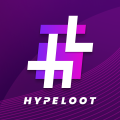Axelar provides a decentralized network that connects dApp builders with blockchain ecosystems, applications and users for frictionless cross-chain communication. Axelar consists of a protocol suite, tools, and APIs, designed to break down the barriers to cross-chain communication.
Axelar goes far beyond sending wrapped assets with General Message Passing, which carries any payload securely cross-chain. Applications can call any function on any connected chain, and deliver a one-click experience for users on any other connected chain. This is a new kind of dApp development that puts users first and lets developers build on the platform best suited to their use case.
Atop of the Axelar stack sits an application-development layer, used to compose across any number of chains. Developers go cross-chain without new programming languages or added complexity. They focus on building the functionality that differentiates their dApp.
Beyond this, Axelar validators also have additional duties as they are responsible for verifying all cross-chain activity being processed by the network. This requires validators to run nodes for Axelar-supported chains, and observe those external chains for activity. For example, in an asset transfer flow moving tokens from chain A to chain B, the user requesting the transfer must deposit tokens to a deposit address on chain A, and wait for Axelar network to confirm this deposit. This confirmation is done by the validators. A vote is started on the Axelar network, asking each validator to observe their chain A nodes for the deposit transaction made by the user. The validators then cast votes on whether or not the deposit transaction was observed on their chain A node. The votes are tallied and if the number of confirmation votes surpasses a set threshold, the deposit transaction is considered confirmed by the Axelar network.
At this point, Axelar's multi-party cryptography scheme kicks in. If the destination chain B has an Axelar Gateway deployed, the tokens transferred must be minted by the Gateway smart contract and transferred to the user's chain B deposit address. Each Gateway contract is controlled by a key that is able to issue commands to the Gateway and approve transactions by signing. Each Axelar validator holds a piece of this key, called a key share. Validators agree through their confirmation votes to confirm a deposit and sign a transaction transferring the tokens to the user's address on chain B, which completes the asset transfer. Once enough key shares have agreed, the transaction can proceed.
This process can be applied to passing general messages through the network as well. As you can see, Axelar validators handle the important task of authenticating cross-chain activity, and authorizing the transfer of messages and funds.
As Axelar grows and connects more and more chains, it becomes increasingly restrictive to require every Axelar validator to run a node for every chain supported by the network. Instead, Axelar validators are incentivized to run nodes for as many supported chains as possible, through increased staking rewards, based on the number of chains they support.


























